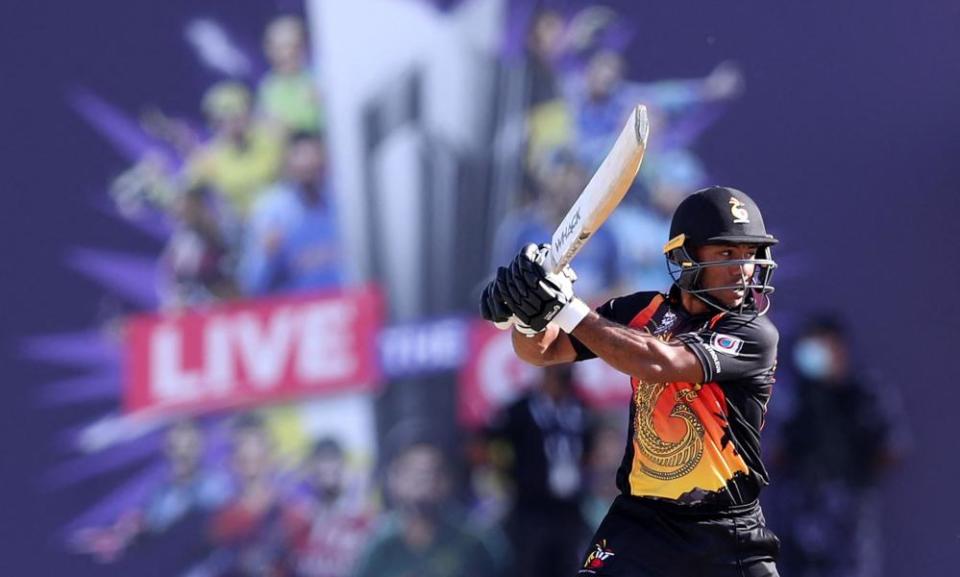Will T20 cricket mutate or stagnate? Either way it should be fun finding out

Not long after the second world war, in an attempt to discover more humane and peaceable functions for the frightening new toy of atomic power, the US government adopted a policy of deliberately radiating fruit. At the Brookhaven National Laboratory in Rhode Island, scientists built something called a “gamma garden”, where various fruits and other plants were arranged in concentric circles and zapped with radioactive cobalt-60. The hope was that the new mutant food might be bigger, tastier, more resilient, perhaps even eradicate world hunger and prevent another war.
As it turned out, the results were mixed. The crops closest to the radiation simply died. Others were riddled with tumours. But many of the genetic mutants thrived and were useful enough to survive to this day. The Rio Red grapefruit, bred for extra redness, is one of the most popular varieties in America. Most of the mint in toothpaste and chewing gum derives from a mutated Brookhaven peppermint plant. Irradiated durum and barley can be found in pasta, bread and whisky. Out of the chaos, this great disruption of nature, something emerged that was vital, beneficial and totally new.
Related: Curtis Campher grabs four wickets in four balls as Ireland thrash Netherlands
By now even the least attentive of you will surely have identified the essential commonality between 1950s atomic horticulture and Twenty20 cricket: a discipline currently in the throes of its own quietly unruly mutation. It might bestow delicious red grapefruit. On the other hand it might end up producing several dozen tumorous plums and three giant killer raspberries who end up eating everyone else to death. (This is a metaphor, yes.) All we can really say with any confidence is that something very interesting is happening in the game’s fastest-growing format.
Take, by way of example, the encounter between Scotland and Bangladesh on Sunday at the T20 World Cup, which has just begun in the United Arab Emirates and Oman. The game seemed to be following a familiar pattern when Scotland slumped to 53 for six. Chris Greaves hit a rapid 45 off 28 balls to lift them to 140. Then, with the esteemed Shakib Al Hasan and Mushfiqur Rahim marshalling the chase, Greaves came on with his slippery little leg-breaks and dismissed them both in his first seven balls. Scotland, improbably, won.
At which point it is probably worth telling you a little bit about Greaves. He doesn’t have a Scotland central contract. He spent most of the summer playing league cricket for Whitburn in Sunderland. Until recently, according to his captain Kyle Coetzer, he was delivering parcels for Amazon. He is not, by even the broadest definition, a professional cricketer.

But, here’s the thing: he plays like one. He upper-cuts, reverse-sweeps, switch-hits, bowls googlies into the pitch. The skills he displayed in taking apart the world’s No 6-ranked T20 side, players like Shakib and Mushfiqur with 750 international caps between them, were not radically different from those of the elite franchise players who will be entering the competition at the Super 12 stage this weekend. Greaves is the sort of talent that simply could not have existed a decade ago, before the rapid mutation and dissemination of T20 technique around the world. And yet until Sunday, most cricket fans had probably never heard of him.
This, in essence, is the promise and the destiny of T20. The depth and breadth of talent in world cricket is unprecedented. Good, interesting players are somehow springing up like mutant fruit on every continent. An American fast bowler called Ali Khan has become a fixture on the global franchise circuit, turning out in the Pakistan Super League and the Caribbean Premier League. A destructive Romanian opening batsman called Ramesh Satheesan sits above David Warner in the ICC world rankings (with the caveat that T20 rankings are really just a bit of fun). Greaves’s Scotland teammate George Munsey has developed a reputation as one of the most fearsome hitters on the Associate circuit.
Related: Liam Livingstone: ‘My biggest goal is Test cricket – how that happens, I don’t know’
The question is what becomes of all this talent. A few years ago the ICC, in one of the boldest and most far-sighted decisions it has ever taken, awarded official T20 international status to all matches between its member nations – all 104 of them – and at a stroke eroded the traditional divide between “the proper countries” and “everyone else”. This year it announced that from 2024 the T20 World Cup would be expanded to 20 teams. There is a renewed push to get cricket into the Los Angeles Olympics of 2028.
Taken together, this has the potential to become the most transformative, democratising decade in the game’s history. As ever, though, there is an alternative view. India’s coach, Ravi Shastri, was the latest to express it in a Guardian interview last month, arguing that international T20 should be scaled back in favour of domestic leagues, following the model of football. Others have gone further: Graeme Smith and Trevor Bayliss have argued for T20 internationals to be scrapped entirely. In this model, by extension, the function of the smaller cricketing nation is not to flourish in its own right but essentially to produce labour for the big franchise competitions that generate the bulk of wealth in the game.
What we’re seeing here is two competing visions of what cricket’s future should look like. In one the game begins to coalesce around the nuclei of its biggest nations, the major franchise leagues and its marquee Test series. In the other it spreads and fissions, globalises and democratises, transforms in ways we can’t predict yet. It could wither, deform, break apart. Or it may just taste delicious.

 Yahoo Movies
Yahoo Movies 